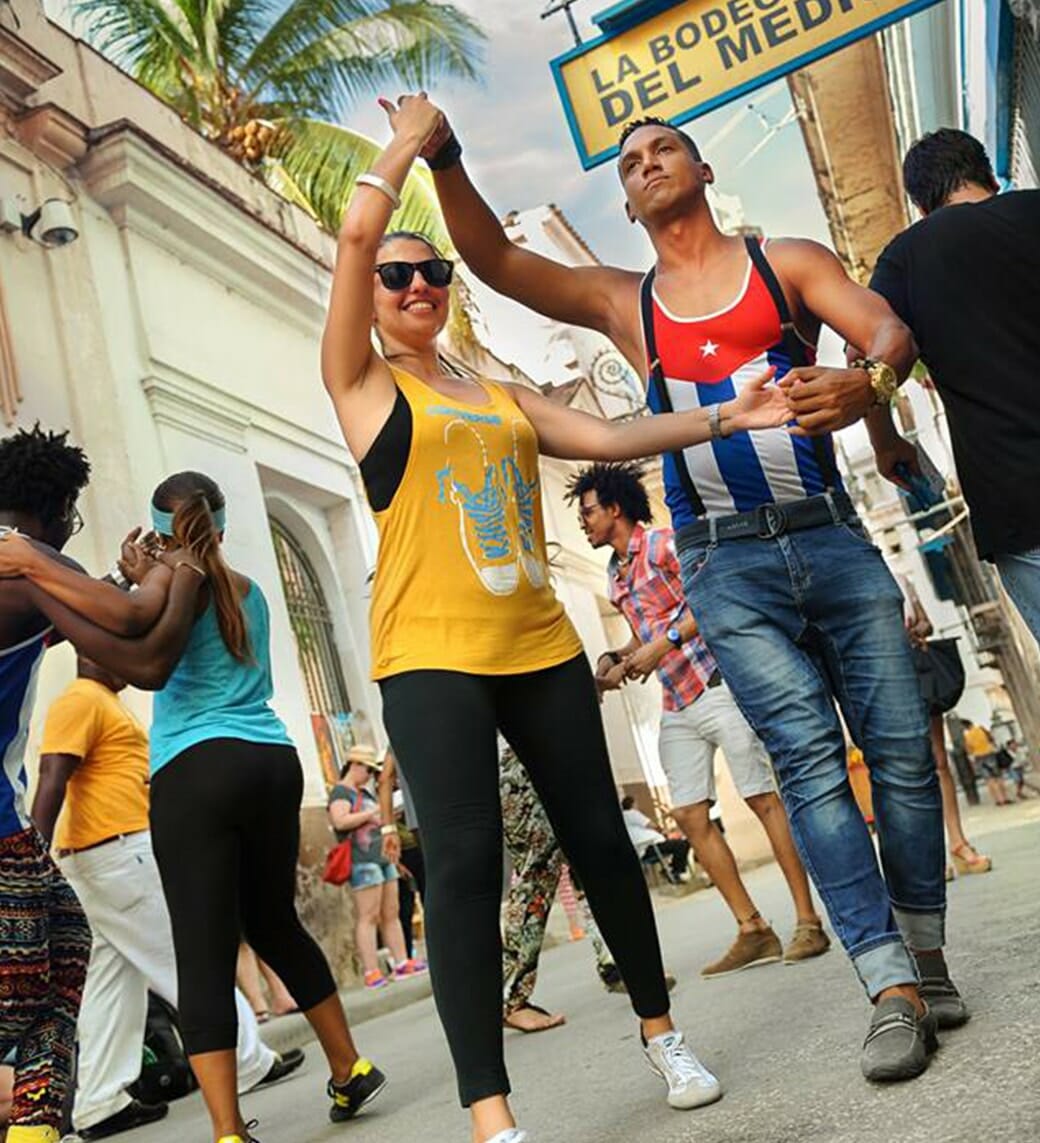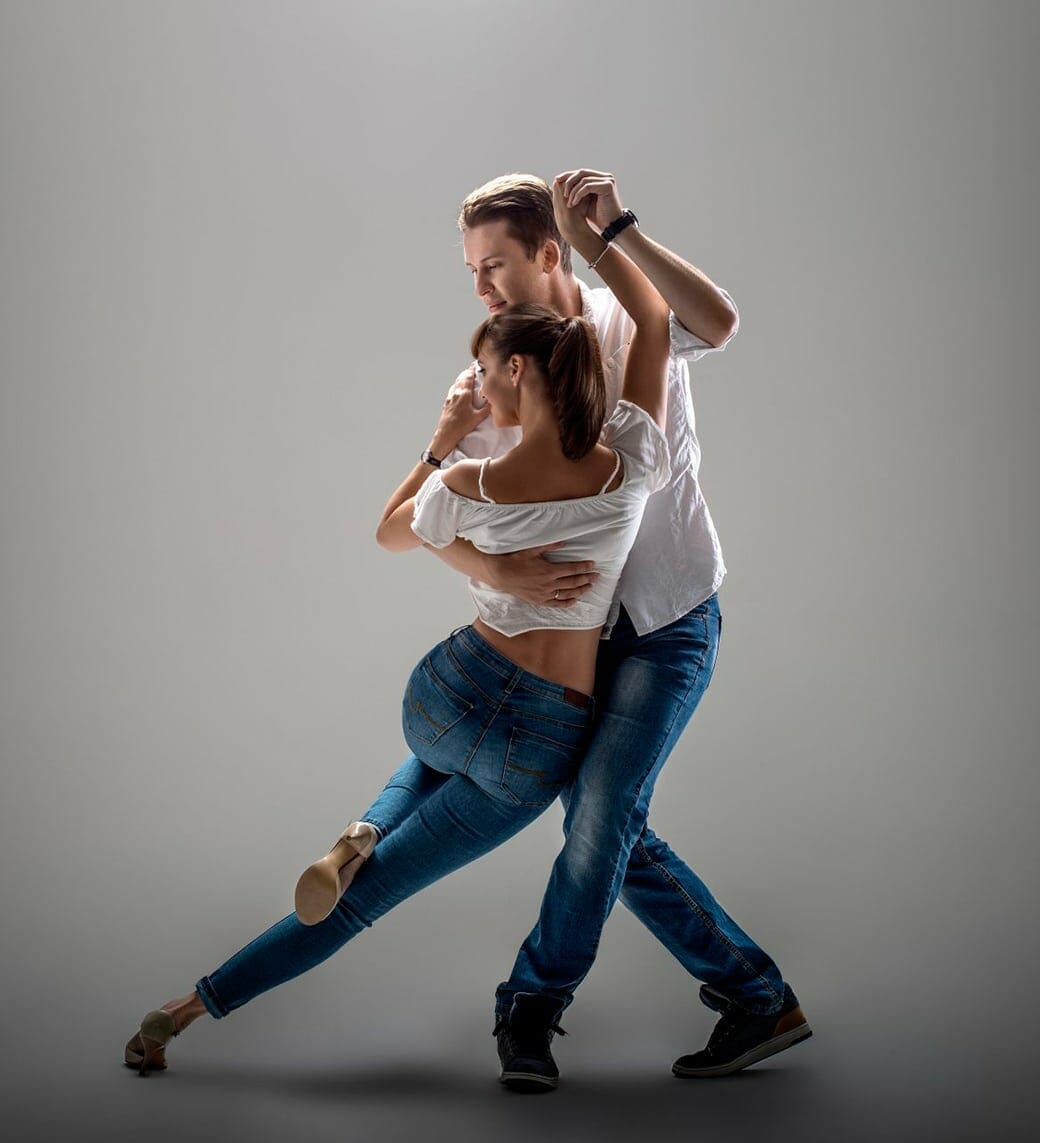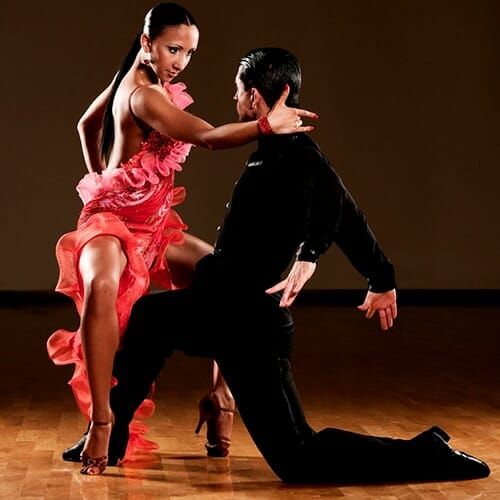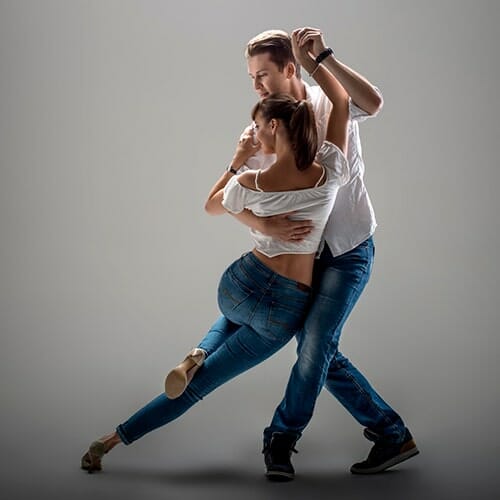
SALSA
Salsa is one of the most popular forms of social dance originating from Caribbean folk dances. The origins of this dance come from a combination of the Afro-Cuban dances like son, cha cha, mambo and rumba. The dance, along with salsa music, had its major development in the mid 1970s in New York.
The dance today is followed with distinct styles of their own, such as Cuban, Puerto Rican, Cali Colombia, L.A. and New York styles. The difference between them is easy to notice in the music, but also within the rhythm, so we have salsa dancing “on 1” and “on 2”.
Whatever the style you prefer, they all have one thing in common: the salsa dance socials, which are commonly held in night clubs, bars, ballrooms, restaurants and outside, especially when part of an outdoor festival.

BACHATA
Bachata is a style of social dance from the Dominican Republic which is now danced all over the world. In its beginnings, many people worldwide had a chance to hear about it while already taking salsa classes, but today, thanks to its modern and attractive form which is present in many videos online, bachata dancers are creating specific community of their own.
Some of the main styles that are present today are “traditional/Dominican”, “sensual” and “urban/modern” bachata. Their difference is easy to notice both in musical, but also in steps section. The steps in Bachata Traditional are inspired by its origins, while in Bachata Sensual and Bachata Moderna there are many other dances which influenced the style, such as kizomba, zouk, reggaeton and hip hop.
The fact that there are dance schools, festivals and parties where bachata is the main dance and not just an addition to salsa or any other social dance, speaks volumes about its popularity nowadays.

KIZOMBA
Kizomba is one of the most popular genres of dance and music developed in the early 1980s.
It is known for having a slow, insistent and sensuous rhythm, influenced by electronic percussions.
Its music and steps can sometimes be confused with bachata because of its simplicity and sensuality, but in their origins they are very different.
Kizomba dance has its origins in another African dance called Semba, danced in the 1950s in Angola. In the 1990s, when the actual Kizomba music was starting to get more popular, Angolan Semba dancers started to adapt their Semba steps according to the tempo and flavor of Kizomba beats.
Although the steps might look easy, this type of social dance requires very good leading skills and rhythm. Today we have several types of this dance: traditional, urban and tarraxa or tarraxinha style.


